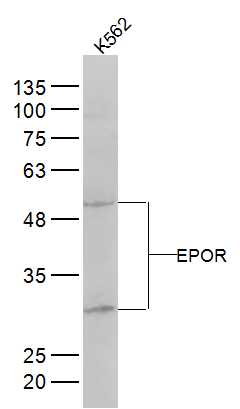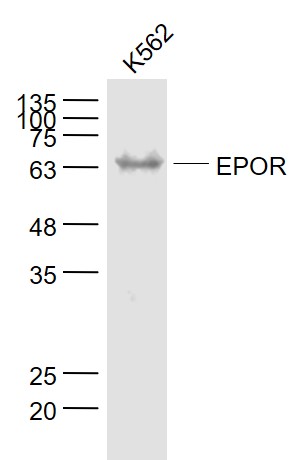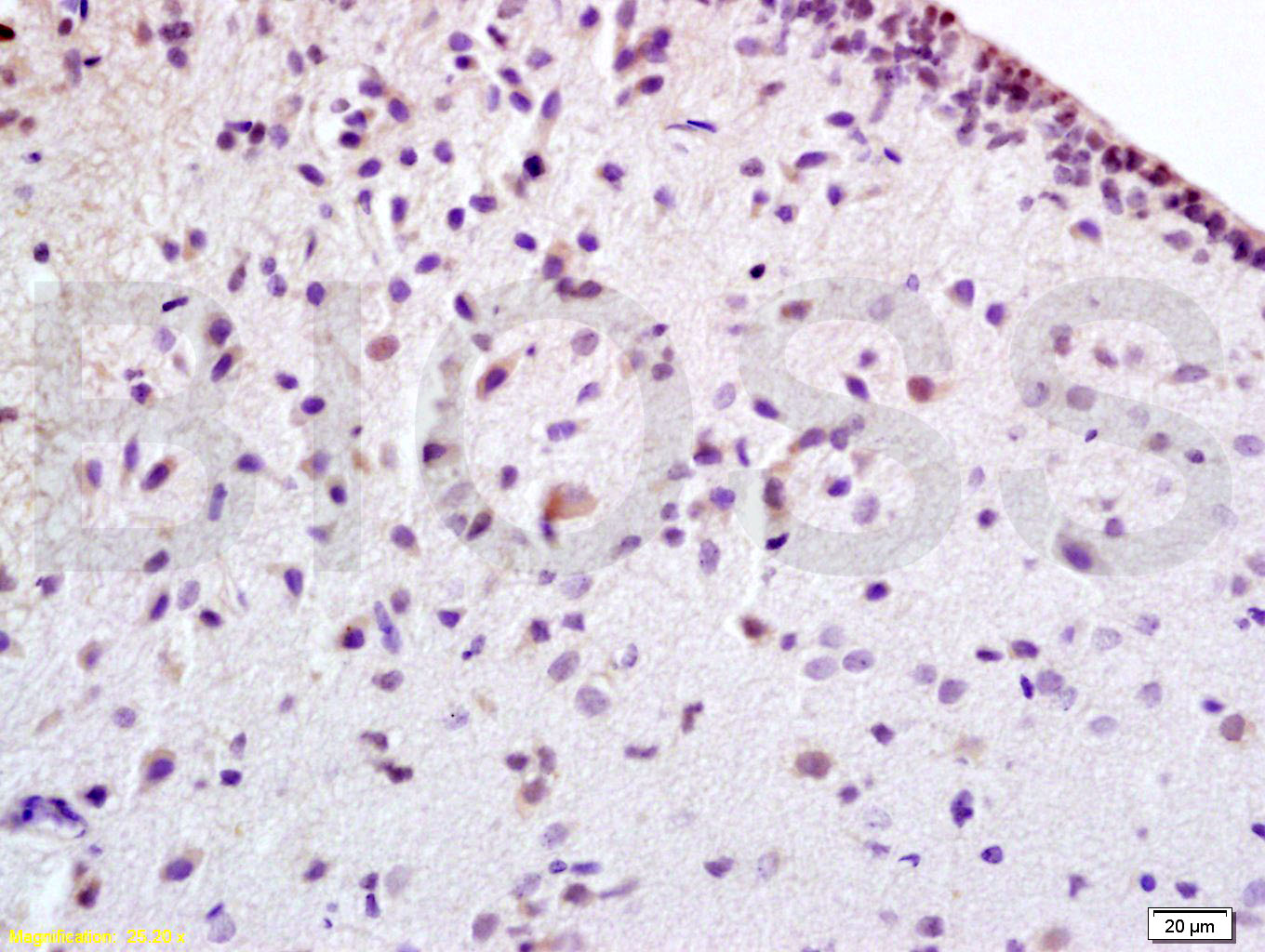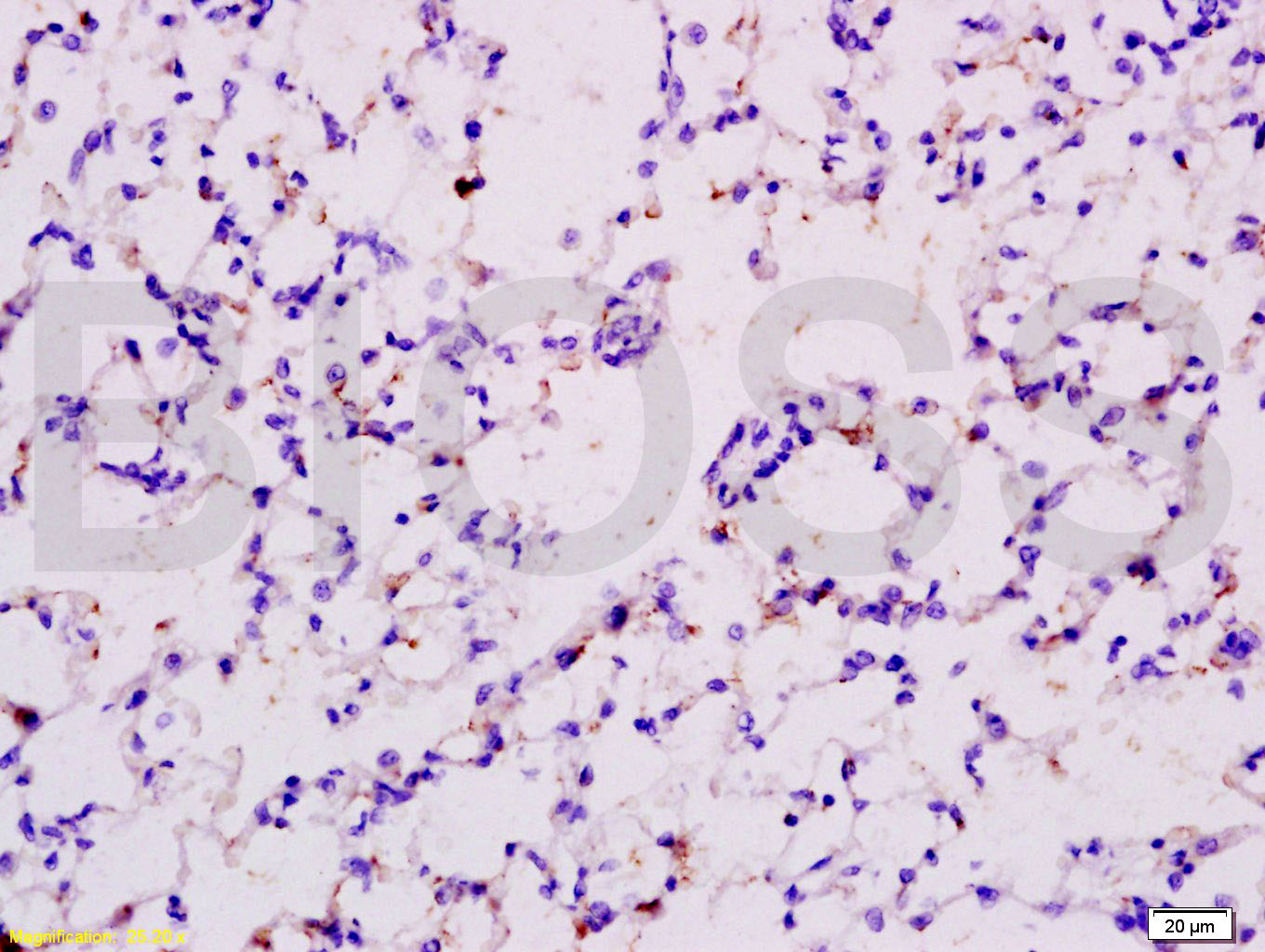
Rabbit Anti-EPOR antibody
erythropoietin receptor; EPO R; EPO Receptor; Erythropoietin receptor precursor; EPOR_HUMAN; MGC138358.
View History [Clear]
Details
Product Name EPOR Chinese Name 红细胞生成素受体抗体 Alias erythropoietin receptor; EPO R; EPO Receptor; Erythropoietin receptor precursor; EPOR_HUMAN; MGC138358. literatures Research Area Tumour Cardiovascular immunology Signal transduction Stem cells Apoptosis The cell membrane受体 G protein signal Immunogen Species Rabbit Clonality Polyclonal React Species Human, Rat, (predicted: Mouse, Dog, Cow, Horse, ) Applications WB=1:500-2000 ELISA=1:5000-10000 IHC-P=1:100-500 IHC-F=1:100-500 IF=1:100-500 (Paraffin sections need antigen repair)
not yet tested in other applications.
optimal dilutions/concentrations should be determined by the end user.Theoretical molecular weight 56kDa Cellular localization The cell membrane Extracellular matrix Secretory protein Form Liquid Concentration 1mg/ml immunogen KLH conjugated synthetic peptide derived from human EPOR: 301-450/508 <Cytoplasmic> Lsotype IgG Purification affinity purified by Protein A Buffer Solution 0.01M TBS(pH7.4) with 1% BSA, 0.03% Proclin300 and 50% Glycerol. Storage Shipped at 4℃. Store at -20 °C for one year. Avoid repeated freeze/thaw cycles. Attention This product as supplied is intended for research use only, not for use in human, therapeutic or diagnostic applications. PubMed PubMed Product Detail The erythropoietin receptor (EPOR) is a member of the cytokine receptor family. There are several isoforms including: EPOR-F (full length), EPOR-S (soluble form), and EPOR-T (truncated form). Upon erythropoietin (EPO) binding, the EPOR activates Jak2 tyrosine kinase which activates different intracellular pathways including: Ras/MAP kinase, phosphatidylinositol 3-kinase and STAT transcription factors. The stimulated EPOR appears to have a role in erythroid cell survival. Defects in the EPOR may produce erythroleukemia and familial erythrocytosis. A functional EPOR is found in the cardiovascular system, including endothelial cells and cardiomyocytes, and data suggest that the EPO/EPO receptor system plays an important role in cardiac function. In animal studies, treatment with EPO during ischemia/reperfusion in the heart has been shown to limit the infarct size and the extent of apoptosis.
Function:
Receptor for erythropoietin. Mediates erythropoietin-induced erythroblast proliferation and differentiation. Upon EPO stimulation, EPOR dimerizes triggering the JAK2/STAT5 signaling cascade. In some cell types, can also activate STAT1 and STAT3. May also activate the LYN tyrosine kinase. Isoform EPOR-T acts as a dominant-negative receptor of EPOR-mediated signaling.
Subunit:
Forms homodimers on EPO stimulation. The tyrosine-phosphorylated form interacts with several SH2 domain-containing proteins including LYN, the adapter protein APS, PTPN6, PTPN11, JAK2, PI3 kinases, STAT5A/B, SOCS3, CRKL. Interacts with INPP5D/SHIP1. The N-terminal SH2 domain of PTPN6 binds Tyr-454 and inhibits signaling through dephosphorylation of JAK2. APS binding also inhibits the JAK-STAT signaling. Binding to PTPN11, preferentially through the N-terminal SH2 domain, promotes mitogenesis and phosphorylation of PTPN11. Binding of JAK2 (through its N-terminal) promotes cell-surface expression. Interaction with the ubiquitin ligase NOSIP mediates EPO-induced cell proliferation. Interacts with ATXN2L.
Subcellular Location:
Cell membrane; Single-pass type I membrane protein.
Isoform EPOR-S: Secreted. Note=Secreted and located to the cell surface.
Tissue Specificity:
Erythroid cells and erythroid progenitor cells. Isoform EPOR-F is the most abundant form in EPO-dependent erythroleukemia cells and in late-stage erythroid progenitors. Isoform EPOR-S and isoform EPOR-T are the predominant forms in bone marrow. Isoform EPOR-T is the most abundant from in early-stage erythroid progenitor cells.
Similarity:
Belongs to the type I cytokine receptor family. Type 1 subfamily. Contains 1 fibronectin type-III domain.
SWISS:
P19235
Gene ID:
2057
Database links:Entrez Gene: 2057 Human
Entrez Gene: 13857 Mouse
Omim: 133171 Human
SwissProt: P19235 Human
SwissProt: P14753 Mouse
Unigene: 631624 Human
Unigene: 2653 Mouse
Unigene: 22394 Rat
Product Picture
K562(Human) Cell Lysate at 30 ug
Primary: Anti-EPOR (SL1424R) at 1/300 dilution
Secondary: IRDye800CW Goat Anti-Rabbit IgG at 1/20000 dilution
Predicted band size: 56 kD
Observed band size: 30/52 kD
Sample:
K562(Human) Cell Lysate at 30 ug
Primary: Anti- EPOR (SL1424R) at 1/1000 dilution
Secondary: IRDye800CW Goat Anti-Rabbit IgG at 1/20000 dilution
Predicted band size: 56 kD
Observed band size: 64 kD
Tissue/cell: rat brain tissue; 4% Paraformaldehyde-fixed and paraffin-embedded;
Antigen retrieval: citrate buffer ( 0.01M, pH 6.0 ), Boiling bathing for 15min; Block endogenous peroxidase by 3% Hydrogen peroxide for 30min; Blocking buffer (normal goat serum,C-0005) at 37℃ for 20 min;
Incubation: Anti-EPOR Polyclonal Antibody, Unconjugated(SL1424R) 1:100, overnight at 4°C, followed by conjugation to the secondary antibody(SP-0023) and DAB(C-0010) staining
Tissue/cell: rat lung tissue; 4% Paraformaldehyde-fixed and paraffin-embedded;
Antigen retrieval: citrate buffer ( 0.01M, pH 6.0 ), Boiling bathing for 15min; Block endogenous peroxidase by 3% Hydrogen peroxide for 30min; Blocking buffer (normal goat serum,C-0005) at 37℃ for 20 min;
Incubation: Anti-EPOR Polyclonal Antibody, Unconjugated(SL1424R) 1:200, overnight at 4°C, followed by conjugation to the secondary antibody(SP-0023) and DAB(C-0010) staining
Partial purchase records(bought amounts latest0)
No one bought this product
User Comment(Total0User Comment Num)
- No comment






 +86 571 56623320
+86 571 56623320




